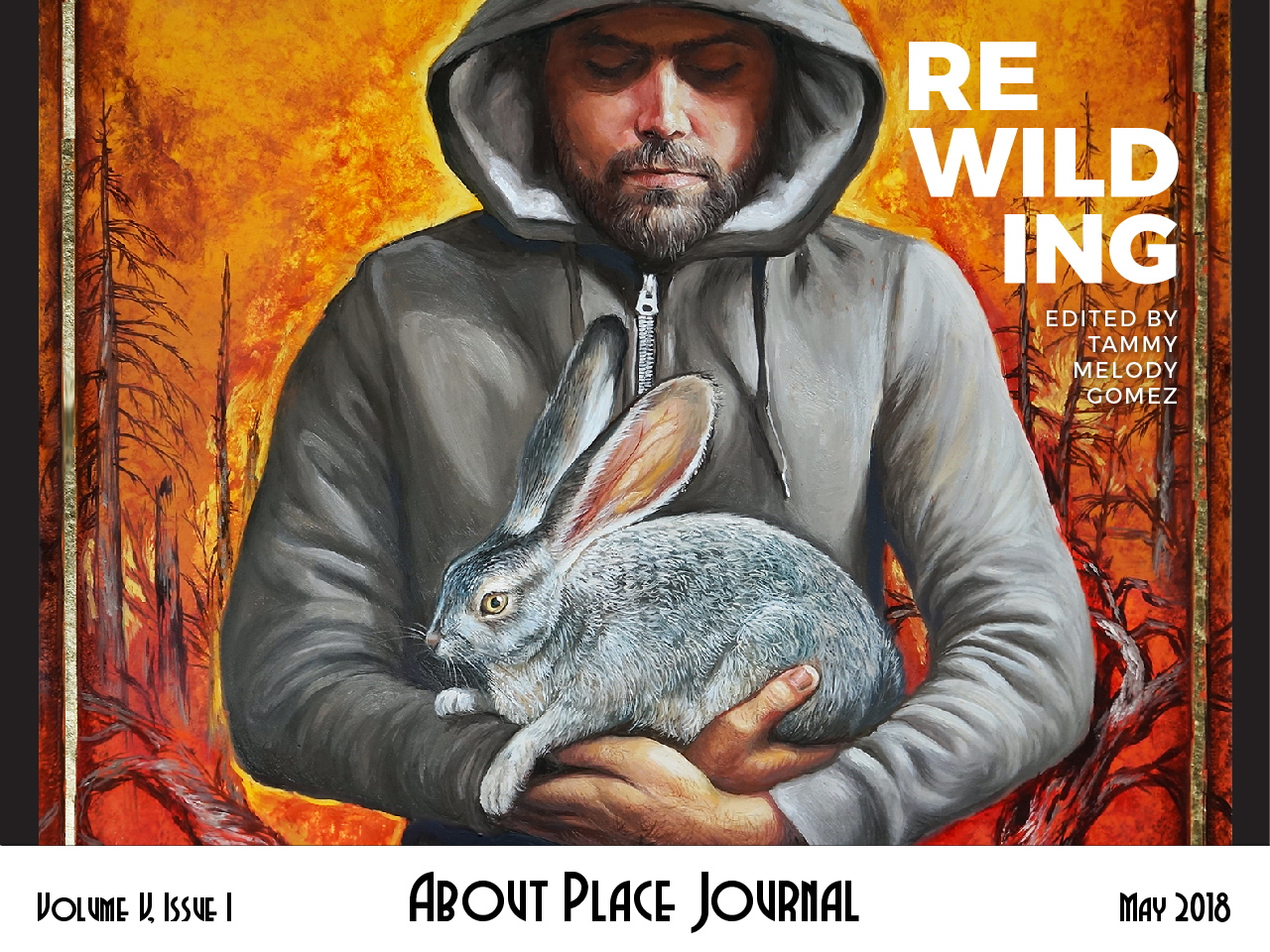Wilderness has been a problematic idea for as long as I can remember thinking about it, and when faced with the concept of “rewilding,” I must admit that I had my doubts. I was concerned with reifying the colonizing force of the wilderness idea. I did not want to reenact an erasure of indigenous dwelling on the land. But I was drawn to this issue by the wide range of creative works—poetry, prose, visual art, soundscapes, performances—that About Place inspires and the promise of that diversity’s potential to challenge the boundaries of a concept that still carries so much power today. What I encountered in these works is a consistent undermining of the boundary between humans and the natural environment. Check: there is not “culture” here and nature “over there.” These artists also constantly wonder and work at how humans can best play a role as a member of this broader community. Check: responsibility to the ecological community, not dominance over it. This responsibility to the community is what “rewilding” ultimately means to me after learning from all the works in this issue.
But these works run deeper than my scholar’s anxieties. The many lived experiences represented in this issue call to task the settler colonial history of wilderness, declaring the breadth of lives that have shaped our communities and will continue to fiercely create toward a more inclusive future, in defiance of the forces stacked against us, just as we’ve always done.

